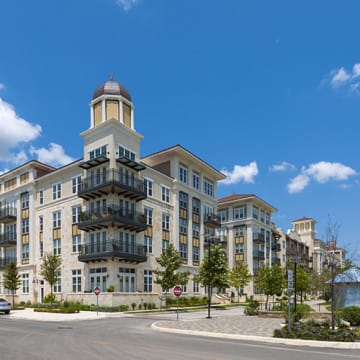Austin’s Wildland-Urban Interface Code
According to the International Code Council, Austin is the largest municipality outside of California to adopt a wildland-urban interface (WUI) code. A highly urban city with more than 60 percent of its existing structures located within 1.5 miles of the WUI predominantly along its eastern and western edges), Austin’s WUI code was developed in response to a record-breaking fire season in 2011.
In 2011, driven by severe drought, the number of wildfires, acres burned, homes destroyed, and lives lost for the state of Texas and the city of Austin were unprecedented. Excluding fires only responded to by local fire departments, Texas experienced 31,453 wildfires in 2011 that burned 4 million acres and destroyed 2,947 homes. Austin was particularly affected by the Bastrop County Complex fire, which began on September 4 just east of Austin.
Resilience improvements were made in Austin following the 2011 fire season, including the formation of a Joint Wildfire Task Force with Travis County and the establishment of the first Wildfire Division within the Austin Fire Department (AFD) to help facilitate wildfire recovery and implement related projects. AFD coordinated the drafting and approval of the new WUI code.
The successful collaborative process in Austin for developing a best-in-class WUI code and fostering stakeholder buy-in—despite initial skepticism—serves as a valuable model for other urban and rapidly developing areas that carry high wildfire risk.
WILDFIRE RESILIENCE STRATEGIES
One of the resilience strategies used in Austin was ensuring the WUI code was based on the best available local and national wildfire data. “We have a great GIS team that has mapped the WUI within the city and what risks are there for different areas of the city,” says Carrie Stewart, division chief of AFD’s Wildfire Division. As part of its wildfire resilience efforts, the city maintains a public interactive WUI map on its website. AFD’s Wildfire Division also reviewed after-action reports from major fires, including California’s Camp fire in 2018, to evaluate how polices and structure characteristics affected damages.
Developing the code was also an extensive participatory process involving public, private, and community stakeholders. Active development stakeholder groups included the Real Estate Council of Austin, the Greater Austin Homebuilders Association, and the Austin Board of Realtors. “All of our progress is built on partnerships and collaboration and helping others understand their roles in wildfire risk reduction and how we can support them,” says Justice Jones, AFD wildfire mitigation officer.
The new WUI code includes best-practice ignition-resistant standards for both new and remodeled structures, including measures for ember protection and structure hardening. “Now, if we do have another fire in the WUI and people want to rebuild, they’ll be required to do so based on best practices and standards,” says Mark Baker, AFD’s WUI coordinator, who had a leading role in developing the WUI code.
Residents and developers with existing structures do not have to make structural upgrades, but they are required now to maintain defensible space. The code also requires safe storage of combustible materials. Alongside wildfire hazards, the WUI code development team also considered equity and affordability challenges.
OUTCOME AND LESSONS LEARNED
On April 9, 2020, the Austin City Council voted unanimously to approve the new 2015 International Wildland-Urban Interface Code, making Austin the first major city in the state of Texas to adopt such a measure; it will go into effect on January 1, 2021.
“All of our progress is built on partnerships and collaboration and helping others understand their roles in wildfire risk reduction and how we can support them.” – Justice Jones, Wildfire Mitigation Officer, Austin Fire Department
Council member Jimmy Flannigan also referenced the context in which the vote took place. “Nothing is going to stop a wildfire from starting, certainly not a pandemic, and we need to make sure we’re doing everything we can to be prepared for it,” he said.
Those in Austin say the new WUI code improves the environmental resilience and will reduce the potential for wildfire-related losses. “The adoption of the WUI code stands out because of the nature of Texas, and planning and private property rights. That was a real success to be able to accomplish that and to head off unsafe development,” Baker says.
The city estimates that implementing the code will cost $1.65 million, including $1.2 million for staff time and inspections, $100,000 for outreach and education, $50,000 for ongoing operations, and $300,000 for one-time costs. The development of the WUI code began in 2016 and took four years to finalize.
Regarding lessons learned, Jones says, “A lot of our challenges were overcoming internal perceptions and biases towards what wildfire mitigation would mean and the impacts of that. To address those, we worked diligently to be transparent, and to establish and use best practices.”
Baker also points to Austin’s data-driven approach as integral to success. “We wouldn’t have been able to get the WUI code adopted if we didn’t have a really strong understanding of where the risk is and where that code would apply,” he says.
